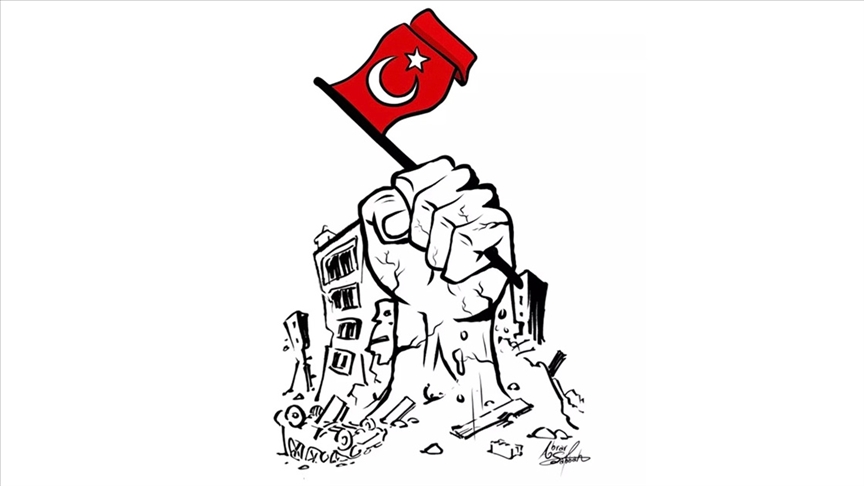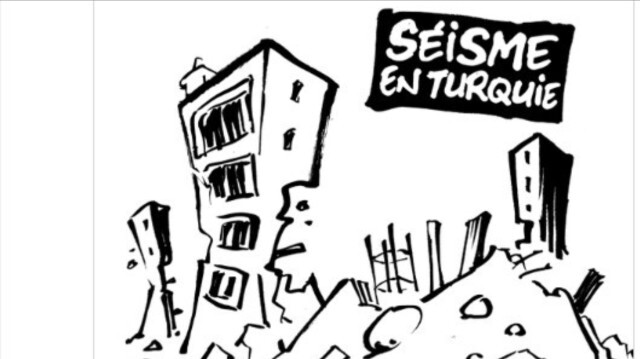The Al-Aqsa Mosque is the first kiblah (direction that is prayed to) of Muslims and one of the three places of worship considered most sacred. In Aramaic, the Al-Aqsa Mosque is referred to as Beth Makdesha, in Hebrew Beth Ha-Miqdash and Arabic Bait-ul Maqdis, meaning "Sacred house." These names have remained with it since its establishment was later used to encompass the entire city. The name Al-Qudus (Jerusalem), which Muslims have embraced, comes from the same root and refers to the place of worship and not the entire city.
Islamic scholars agree that the place referred to in the Holy Qur'an as Masjid-ul Aqsa, whose surroundings have been made sacred, are in fact Bait-ul Maqdis. In Arabic, "aqsa" means far and the place of worship was given this name due to its distance from Mecca. According to Judaism, it existed before the world did; however it was in the heavens. God then began to create it from where his shadow was cast and it was at that point that the Prophet Adam was created. According to a hadith, this is the second oldest place of worship erected for mankind following the Masjid-ul Haram in Mecca.
Today the Kaba along with its surroundings is referred to as the Masjid-ul Haram and similarly Masjid-ul Aqsa, along with its surroundings is referred to as Harem-i Shareef. The Harem-i Shareef encompasses an area in Jerusalem whose north extends 321 meters, its south 283 meters, its east 474 meters and west 490 meters. This sacred location contains the Qubbat As-Sakhrah (the mosque itself) whose maximum height reaches 30-40 kilometers and is surrounded by walls.
The establishing of the location and planning of the Al-Aqsa Mosque begins with the Prophet Davud (David, pbuh). However, Allah indicates that the place of worship will be completed by Prophet Sulaiman (Solomon, pbuh). Thus Prophet Davud would explain the situation to his son Sulaiman and order him to build the mosque, entrusting him with all of the supplies and workers necessary to build the structure.
The Bait-ul Maqdis, which was full of valuable goods, was attacked by occupiers and looters from time to time, which resulted it to become damaged. The greatest destruction came during the time of Babylonian Emperor Buhtunnasr II and the third conquering of Jerusalem (B.C. 586). Buhtunnasr, who completely destroyed the city, took the gold embossments off of the door and walls of the destroyed temple, along with all the other valuable pillage and a large portion of the people to Babylon along with him. The Babylonian bondage, which began in this fashion ended with the occupation by the Persian Empire (B.C. 539). A Jewish leader, Zerubabbel, along with his friends, then headed to Jerusalem in order to reconstruct this place of worship (B.C. 515), a process which took around 25 years. Jerusalem, which remained under the control of Parthians for a short period of time, was seized by Herod I (also known as the Herod the Great), whom the Romans declared a Jewish King; through the help of Jews the temple was restructured and expanded. This particular phase of construction began around 20 years prior to the birth of Isa (Jesus, pbuh) and continued into his lifetime. The Western Wall (also referred to as the Wailing Wall), which is currently used by Jews for prayer as it is believed to be an original part of the Temple of Solomon, is part of the walls surrounding this place of worship which is located in the West wing of the building. The rooms referred to in the Qur'an, in which Prophet Zakariyya (Zachariah, pbuh) and Mariam (Mary, pbuh) sought refuge for worship must be located within this structure.
The temple along with Jerusalem were almost completely burned down following the conquest by the Roman Army under the command of Titus in 70 A.D.; the city was reconstructed during the time of Hadrien (117-138 A.D.) and the Jupiter Capitolinus Temple was built in place of the Bait-ul Maqdis. It is believed that this temple was destroyed after Constantine accepted Christianity.
It is clearly stated in the first verse of Surah Al-Isra' (Journey by Night) that Prophet Muhammad was brought to the first kiblah of Muslims, the Al-Aqsa Mosque before heading for his miraculous Miraj journey. Al-Aqsa Mosque remained the location for the kiblah for around 16-17 months following the Hijra (Journey from Mecca to Medina). This shows the value placed on the Al-Aqsa Mosque. The Prophet Muhammad had stated, years before Jerusalem had been conquered, that this mosque was one of three which must be visited for the purposes of worship (following the Masjid-i Haram in Mecca and the Masjid an-Nabawi in Medina). The hadith from the Prophet, which state the virtue of prayers performed here are 50,000 times more than those performed at home alone, only reinforce its significance. Omar (pbuh), upon receiving the key to the city of Jerusalem, labored personally among the rubbles that had been left from the era of Christianity, leading the congregation in prayer in the south of the temple and then having a masjid erected there.
According to a narration from Yakubi, despite the fact that the Umayyad Caliph Abdul Malik Bin Marwan is credited with construction of Masjid al-Aqsa for the second time through the use of seven years of taxation revenue, according to the ancient Greek records belonging to Qurra ibn Sarik, who served as the Governor to Egypt from 90-96(709-714), it is understood that it was Walid I who had the structure constructed. The building was extremely damaged following the earthquake that took place in 130 (747-48) and this building was only renovated during the time Abu Jafar al-Mansoor (754-775) after the gold and silver coatings on its doors were taken down and cashed in for money. The structure was partially destroyed again in 158 (775) and renovated by Mahdi-Billah.
The Al-Aqsa Mosque was destroyed yet again in 425 (1034) due to an earthquake and was renovated, which was a based on an order by Caliph Al-Dhahir and the building was made smaller with four arches being raised on its right and left. Following the Crusades, the development of Salah ad Din Yusuf Ibn Ayyub's (commonly known as Saladin) zoning took this version of the structure as its base. The large portion of the structure which has lasted until today remains from the period of Dhahir. When Salah ad Din Yusuf Ibn Ayyub regained Jerusalem, renovating the Al-Aqsa Mosque back to its original form, it required more work than the mere construction work on the Qubbat As-Sakhrah (The Dome of the Rock). The pulpit constructed by Nur ad-Din Zangi in Aleppo, was placed there. The entrance archway in the northern front was constructed by Saladin's nephew, The Amir of Dimashk (the former name of Damascus) Al-Malikul Mu'azzam. The fountain in the north of the mosque dates back to the 14th Century.
The booklet on the Sultan Sulaiman the Magnificent renovation of the Al-Aqsa Mosque which was renovated many times during the Mamluk and Ottoman eras was lost close to the end of the 14th Century. The booklet which documents the 1114 (1702-1703) renovations by Mahmud Efendi is kept in the Islam Museum (Jami-ul Maghariba) located in the West of the mosque. Two of the four books documenting the Sultan Mahmud II renovations dated 1233 (1817-18) have survived until today. The wide-scale renovation of the structure, which took place under the directives of Abdülhamid II, in which the carpets and candles there renewed, was followed by the period under British rule as of 1922 led by Architect Kemaleddin Bey.
A beautiful wooden pulpit constructed by Nur ad Din Zangi was burnt along with the masjid that was partially destroyed following an act of arson by a fanatical Jew on August 21, 1969. A few of the wooden panels which were salvaged from the fire remain on display at the Islam Museum. Even though the structure was renovated in a fashion that was true to its original form in the years to follow, it is still subject to attacks and destruction as a result of ongoing conflict between Arabs and Jews. The Al-Aqsa Mosque, similar to other mosques, functioned as a madrasah. Its library was enriched following the re-conquest of Jerusalem by Saladin.
Nebi Bozkurt, PhD










No comments:
Post a Comment